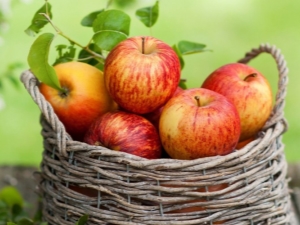Symptoms and causes of allergy to apples

Many people are familiar with first-hand allergies.This article will tell you more about the symptoms and causes of allergy to apples.
Why does it occur?
Apples are very good for the body. That is why these sweet fruits include in their diet people who monitor their health. Fruits contain many active ingredients that contribute to the improvement of the functioning of the whole organism. People who regularly eat these fragrant fruits get sick less and feel better.
However, apples are not always helpful. So, in some people, they can trigger the development of allergies. This pathology is relatively rare, but still continues to be recorded. Usually, food allergy to apples is detected in children. The symptoms of this pathology in a child can be so pronounced that often parents are really scared.
For a long time, the doctors did not know why allergies appear. In order to understand this, numerous scientific studies have been carried out. As a result, scientists were able to determine which substances are “guilty” of this.
The main reason for the appearance of adverse allergy symptoms is the entry into the human body of substances that are allergens. Once in the body, they contribute to the activation of the immune system, which leads to the appearance of adverse symptoms. It is important to note that allergy is detected in a person who has an individual hypersensitivity of the body to the effects of specific allergens. That is why someone does not tolerate apples, and someone, for example, oranges.
The tendency to have allergies is often genetic. Scientists note that if one of the parents was diagnosed with an allergic pathology, then their baby will be at risk for a similar disease. If both parents suffer from severe food allergy to apples, then this risk increases.
Apples contain several components in their composition, which can cause the development of allergic pathologies. So, apples contain specific organic proteins. If a person has individual intolerance to these components, then he will also manifest adverse allergic symptoms.
Sometimes the occurrence of adverse allergy is facilitated by the chemicals with which the fruit has been treated. Thus, a person may for a long time assume that he is allergic to apples, although in fact he is hypersensitive to certain chemicals. For example, he may have intolerance to sulfur dioxide. Fruits are processed with this chemical in order to prolong their shelf life. In order to determine the allergic pathology to sulfur dioxide or other chemical preservatives, a full medical examination is required. To conduct such a differential diagnosis requires an appeal to a specialist, namely an allergist. The doctor will conduct clinical allergy tests, after which he can determine which substances are allergens.
Cross-allergy is another clinical variant of this pathology that scientists have learned about recently. So, for some people, allergies provoke several products at once. Scientists have found that such "provocateurs products" have some similarities in their chemical structure. For example, they contain some identical amino acids. Once in the body, they provoke the appearance of adverse symptoms.
Apples belong to the Pink family. Plants in this group contain substances that are similar in their allergenic composition. For example, the symptoms of cross-allergy in a person who has hypersensitivity to the plants of the "Pink" family can appear not only after eating apples, but also after peaches and even cherries.That is why adults and children who are allergic to apples should definitely contact an allergist to establish all possible products that can also cause a deterioration in well-being.
How does it manifest itself?
Clinical signs of allergies can be very diverse. Many people think that allergic pathology is manifested only by a rash. However, this is not the case.
- Skin rashes - One of the possible symptoms of allergies, but not the only one. Allergic rash can be different. Even the localization of the rash may be different. So, a rash can appear on the face, neck, upper half of the body or on the stomach. In some people, allergic rashes appear on the legs. The appearance of skin rashes also varies. So, a rash can look like numerous small whitish or reddish blisters, towering above the skin. A characteristic feature of an allergic rash is that it passes rather quickly. Skin rashes usually begin to disappear in 1-2 days after their appearance. If a person who has developed such an allergic rash drank an antihistamine in time, then the skin rash can disappear much faster.
- Red spots - Another clinical manifestation of allergies. They can also appear on different parts of the body. These allergic rashes can have a different size. Such eruptions are often accompanied by edema and other clinical manifestations of allergies.
- Pruritus - a classic sign of allergic pathology. This symptom often helps in the diagnosis of allergies. Many skin diseases occur with the appearance of a rash, but not all of them are accompanied by itching. With allergies, this clinical symptom appears quite often. Its intensity may be different. So, in some cases, itching may be mild or moderate, with severe course it becomes strong, and sometimes even unbearable.
- Signs of allergies often appear on the face. Thus, a person with such a pathology may develop pronounced swelling of the lips. As a result, the lips grow in size, which becomes noticeable even from the side.
- Allergic edema can spread to other parts of the face. Neck puffiness and eyelid edema may appear. Doctors call such a condition a special medical term - “angioedema”. This pathological condition is very dangerous. Delayed medical care for Quincke edema can be dangerous in the development of serious consequences, including for the life of a person who has this pathology. It is quite simple to suspect this state: with angioedema, some parts of the face swell, which contributes to a change in appearance.
At the same time, such characteristic changes, as a rule, appear within a few hours after consuming the allergenic product. So, if after eating apples signs of angioedema appear, then you should immediately seek medical help.
- Food allergies can also be a breathing disorder. So, after eating apples in a person suffering from allergies to them, there is a feeling of congestion in the chest and a dry cough. In severe allergic conditions, shortness of breath may develop. Such adverse clinical manifestations also appear within a few minutes or hours after consuming the sweet fruit.
- Specific changes on the part of the digestive organs can also be due to allergies. A person who suffers from food allergies may experience a burning sensation in the stomach or a severe pain syndrome in the abdomen. If such clinical manifestations appear, then you should consult a doctor so that the doctor can determine the cause of their occurrence. Caution is also necessary in the event that such adverse symptoms appear in a person every time after eating apples.
- Perhaps the most severe and dangerous variant of an allergic pathology is anaphylactic shock. This condition is characterized by a sharp decrease in blood pressure, which leads to disruption of the vital organs. In anaphylactic shock, a person loses consciousness, and the functioning of the respiratory system and cardiovascular system is impaired.
Anaphylactic shock is an extremely dangerous pathology that requires immediate medical attention. Stabilize the state quickly enough. If medical care is delayed for some reason, then an anaphylactic shock can lead to extremely negative consequences.
Features of development in infants
Allergic pathology after eating apples can appear not only in an adult. Adverse allergy symptoms may also appear in a child. If an adult can quite clearly say that he is worried, then the child, especially the first three years of life, does not. That is why parents of young children should carefully monitor the health of their crumbs.
Extreme care should be exercised in the preparation of the children's menu for infants. The child of the first year of life has a special sensitivity of the digestive system. So, even the safest products at first glance can cause adverse symptoms in a baby.
Apples are introduced into the diet of infants in the form of juices and mashed potatoes. Moreover, such products are introduced into the children's menu rather early. The first acquaintance of the baby of infancy with apple juice occurs, as a rule, in 4-6 months (depending on the type of feeding). Moreover, to introduce into the diet crumbs of this age, children's doctors recommend juices made from hypoallergenic fruits.
In order not to provoke the emergence of symptoms dangerous for his life and health in a baby, pediatricians recommend his parents to give the child initially small amounts of apple juice as a complementary food. So, for this it is enough just half a teaspoon of sweet drink. After that, the child must be carefully monitored.
If, after adding such a product to the diet, the baby has loose stools, skin rashes or swelling of the face, then it should be shown to the pediatrician. The doctor will examine the crumb and be able to assess whether an allergy to apples has caused these adverse symptoms. If the baby has no clinical signs of allergy, then the amount of apple juice in his diet can be gradually increased.
It should be noted that fruit juices and purees should be introduced into the infants menu in order to avoid the appearance of adverse symptoms in a consistent manner. So, for the first acquaintance you should not use juices made from several fruits at once. If the baby has symptoms of allergy, then it will be extremely difficult to determine which particular fetus caused these clinical signs to appear.
Which varieties are more likely to cause allergies?
Doctors say that not all apples equally often cause allergic diseases. So, according to medical statistics, allergies most often appear after eating red apples. At the same time, the use of not only the sweet fruits themselves, but also the juice that was prepared from them can lead to adverse symptoms.
Yellow apples are much less likely to cause allergies than red ones. However, after they have been consumed, allergic symptoms may also appear. Yellow and red fruits contain a lot of carotenoids, as well as other plant pigments. These substances are allergens. In people with hypersensitivity to these components, these substances can trigger the development of allergies.
Hypoallergenic fruits - green apples. They are advised to use it to people who have a tendency to develop different variants of food allergies. The risk of developing allergic pathologies after eating green apples and the juice prepared from them is quite low. It is no coincidence that the fruits of green are used to prepare baby food, which is used for feeding infants.
The variety of apples is also important. For example, the likelihood of adverse allergic symptoms is higher after eating the fruit varieties "Gloucester" and "Boscope". Juicy fruit varieties "Granny Smith" and "Golden Delicious" rarely cause the appearance of uncomfortable clinical manifestations of allergy.
Scientists note that the number of plant allergens in apples can be different and depends on the time of fruit ripening. They found that during the ripening period, apples contain more active ingredients with allergenic properties. Insidious allergens are not only contained in the pulp of juicy fruits, but also in the peel.
As mentioned above, the development of allergies can provoke chemicals, which were processed fruit for better storage. So, if, after consuming homemade apples grown on your own personal plot, no adverse symptoms occur, and after the purchase there is an allergy, in this case you should definitely contact an allergist. To determine what specific allergen provokes the appearance of such symptoms, in this situation can only an experienced doctor through clinical trials.
Recommendations
Many people think that heat treatment helps to “neutralize” dangerous substances that have an allergic effect. However, it is not. Of course, a number of active ingredients are lost after heat treatment, but allergens still remain in the fruit. Baked apples contain less natural vitamin C and other active ingredients, but the elements that can cause allergic symptoms, while it remains.
People who are allergic to these fragrant fruits should be aware that even after eating baked fruit, they may develop adverse symptoms. That is why they should not be used. Also, if you are allergic to apples, you should not drink juice made from these fruits, and also eat various apple dishes.
For people suffering from allergies, it is very important to have medicines in your home medicine cabinet that help to cope with the adverse symptoms of such diseases. These medicines are prescribed by a doctor. Sometimes it happens that a drunk antihistamine can not only prevent the development of adverse allergic symptoms, but also save lives.
Parents of allergic children who cannot eat apples due to allergies should be monitored closely for their food. In no case should such products contain apples in their diet. For example, slices of these fruits should not be in ready-made cereals or yogurts that a baby eats.
How to find out what you are allergic to, see the next video.






































